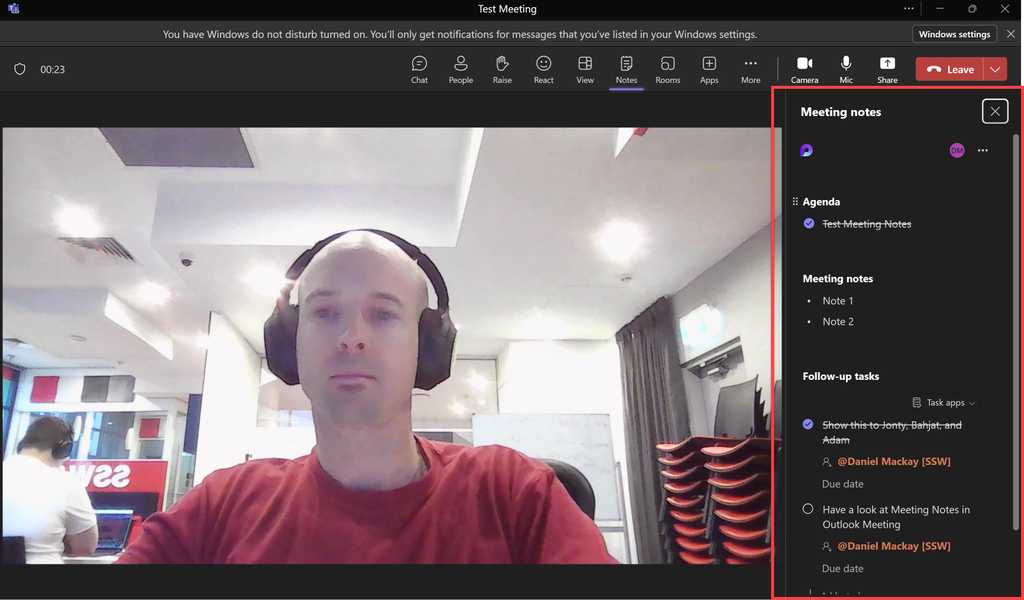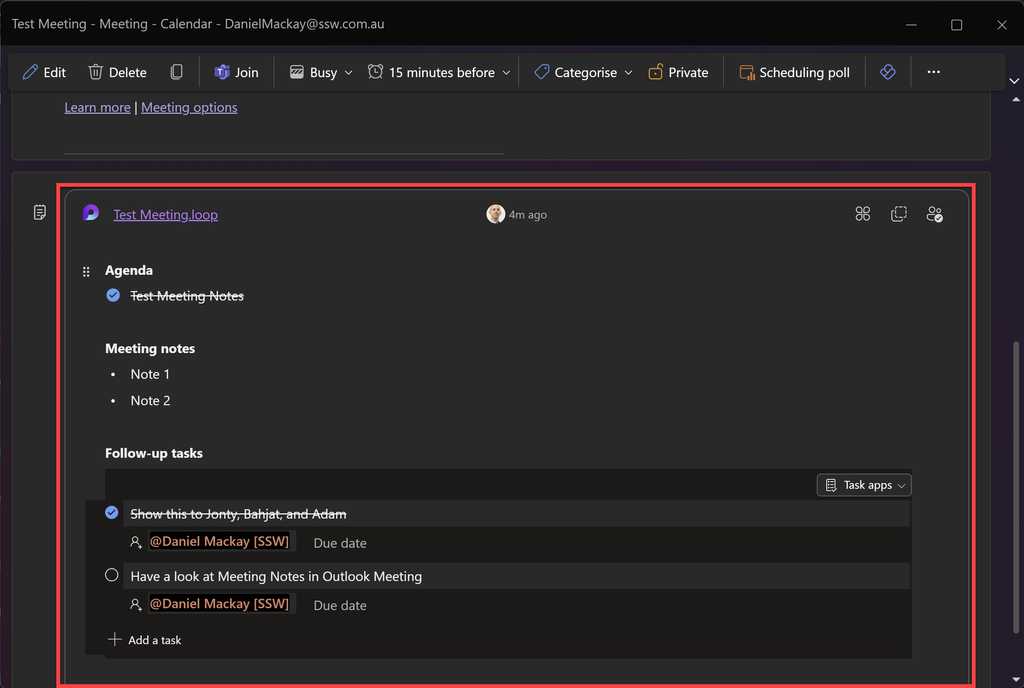After the meeting - Do you create action items?
Last updated by Piers Sinclair [SSW] 6 months ago.See historyThe primary objective of most meetings should be to establish clear next steps. These steps should be broken down into action items and assigned to the responsible individuals, with all other attendees CC’d.
It's recommended to designate a scribe who drafts action points during the meeting and assigns them directly to those responsible for completing the tasks. The scribe should also document any decision-making process by writing down each person's arguments. After writing down everyone’s comments on the options, the notes can be reviewed as a group to better inform what the best course of action might be. If the scribe hasn't been designated at the start, simply ask: "Who will be the scribe?"
Common action items may include:
- Outcomes from the meeting’s agenda
- Items that may be off-topic and require more discussion by subsets of the meeting’s attendees – aka a “parking lot”
- Ad hoc tasks that come up from brainstorming, usually sent as separate email tasks or created as PBIs in a backlog
- Scheduling the next meeting
There are several effective ways to capture action items and notes during a meeting - here are the recommended options:
Option 1: Teams Meeting Notes tab
In a scheduled Teams meeting, the Notes tab is the ideal place to record information, as it keeps everything connected to the meeting’s context.
The meeting organiser should allow time after the meeting to check the action points before their next meeting. This can seen as a summary page at the end of the meeting.
Note: If you're in a Teams call rather than a scheduled meeting, you won’t have access to the Notes tab.
Option 2: Quick and dirty
During the call, type your key action items or decisions directly into a Teams message.
Once you've noted everything down, ask everyone in the call to "Like" 👍 the message if they agree with the summary.
This helps ensure consensus and provides a quick way to confirm that everyone is on the same page without the overhead of creating a new Loop.
Option 3: Loop it up
For more detailed or complex notes, create a new Loop page and share the link with the group.
As the discussion progresses, use the Loop to collaboratively edit and refine the notes.
After the meeting, once you’ve created PBIs (Product Backlog Items) or other tasks based on the notes, include a link to the corresponding PBIs and remember to “zz” (mark as obsolete) the Loop notes.
This prevents anyone from accidentally editing the old notes without realizing that a newer, finalized version exists.


